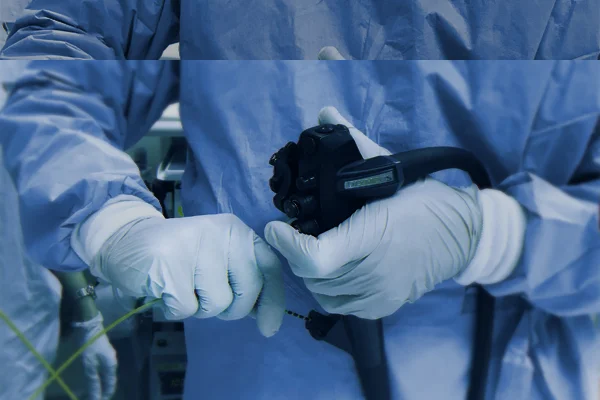COLONOSCOPY (LOWER GI ENDOSCOPY) FAQs
What is Colonoscopy?
What is Polypectomy?
What preparation is required?
What happens during the procedure?
What happens after the Colonoscopy?
What are the risks with the colonoscopy?
What is a Gastroscopy?
What Preparation is required?
How is the procedure done?
How will I feel during this procedure?
What happens after it is over?
What is Colonoscopy?
Colonoscopy and polypectomy are safe procedures performed by specially trained doctors and nurses. Colonoscopy is an examination of the rectum and large bowel.
A long, thin, flexible tube with a light is used. This is called a colonoscope. Using this, your doctor can look at your entire large bowel.
Instruments can pass through the colonoscope to take samples of tissue or fluid. Colonoscopy is used to identify:
Cancer, polyps, colitis and other inflammation
Causes of bleeding
Causes of abnormal or questionable x-rays.
What is Polypectomy?
Polypectomy is the removal of a polyp. A polyp is an abnormal growth of tissue. A polyp may need to be removed. This depends on its size, shape, and location. A wire loop and an electrical current are used to remove the polyp. You should feel no pain while the polyp is being removed.
Polyps can be the source of bleeding, or may contain cancer. Most polyps are not cancerous, but some may contain a small area of cancer or may develop cancer if not removed.What preparation is required?
For the best possible results, your colon (your bowels) must be completely empty. Your doctor will give you written instructions on what to do to prepare yourself.
Be sure to let your doctor and nurses know:The names of the medications you are taking
If you are taking blood thinners (Warfarin/Coumadin) or Aspirin (ASA or acetylsalicylic acid)
If you have any allergies to drugs or food
What happens during the procedure?
You receive an intravenous injection to make you sleepy and relaxed.
You lie on your left side during the examination.
The colonoscope is inserted through your anus into your rectum (or inserted through your colostomy).
You may feel some cramping and pressure. The whole procedure is seldom painful. Most people tolerate it well. Many people fall asleep and remember little about the procedure.
What happens after the Colonoscopy?
We keep you in the recovery area until most of the effects of the medication have worn off. You leave the clinic after you are fully awake.
What are the risks with the colonoscopy?
1-2% bleeding
<0.1%Perforation of the bowel
Up to 3-5 % missed small polyps
<Adverse reaction to sedatives
Colonoscopy is a day procedure.
This video will take you through the steps of this operation.
IF YOU WANT TO READ ABOUT COLONOSCOPY, READ THIS PAMPHLET
What is a Gastroscopy?
Gastroscopy is an examination of the esophagus, stomach, and duodenum (the first part of the small bowel).
Gastroscopy is a safe procedure and a very valuable tool for seeing what is going on in this part of your body.
A gastroscope is a long, thin, flexible tube with a light. The tube is inserted through your mouth, down your esophagus and into your stomach. The doctor can see all around your upper intestinal tract. You are given IV sedation during the procedure.
Instruments can be passed through the gastroscope to:
Take tiny painless biopsies (samples of tissue), cell brushings, or fluid samples
Remove polyps (tiny growths) or tiny swallowed objects
Gastroscopy also helps identify strictured or narrowed areas. The doctor may then dilate or
stretch it out.What Preparation is required?
We ask that you not to smoke eat or drink, including water, after midnight the evening before the procedure.
For the best possible results, your stomach must be completely empty.
Be sure to let your doctor and nurses know:The names of the medications you are taking.
If you are taking blood thinners (Warfarin/Coumadin) or Aspirin (ASA or acetylsalicylic acid).
If you have any allergies to drugs or food.
If you are taking prescription medicine for any medical condition:
Bring the medication is the original bottles with you.
Do not take your morning dose until after the procedure is done.*
*Medical conditions like epilepsy, diabetes, or organ transplants need to be dealt with differently. If you have questions or concerns about your medication, talk with your doctor.
How is the procedure done?
We give you an intravenous injection to make you sleepy and relaxed.
We spray your throat with a local anaesthetic called freezing to help control gagging.
You are placed on your left side for the procedure.
We place a plastic mouth guard between your teeth or gums to protect the gastroscope.
We ask you to swallow the gastroscope, which is thinner than most food you swallow. This is surprisingly easy.
How will I feel during this procedure?
You will feel very sleepy. You will be able to breathe and swallow easily during the procedure. We do put air into you stomach. You may feel bloated and have cramps in your stomach as a result. This feeling passes quickly after the procedure.
What happens after it is over?




